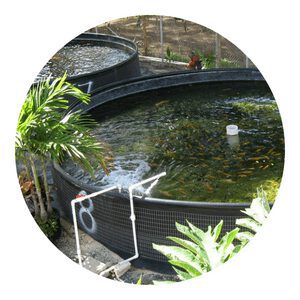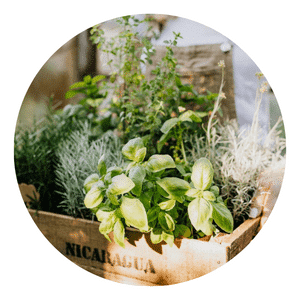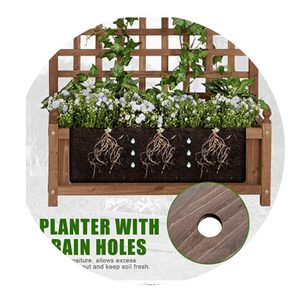What is crop rotation in farming?
Crop rotation is a farm management practice in which farmers grow different types of crops in sequential seasons.
Crop rotation helps to improve soil fertility, suppress weeds and pests, and enhance crop yields.
Rotating different crops also helps to conserve water and reduce the need for chemical inputs.
Crop
What is crop rotation?
Crop rotation is a farming technique that involves growing different types of crops in a particular order.
The main purpose of crop rotation is to improve soil fertility and help control pests and diseases.
Crop rotation can be traced back to ancient times, when farmers would grow legumes (such as beans and lentils) in one field, and then wheat or barley in another.
This allowed the soil to recover from the depletion that comes with growing one type of crop.
Nowadays, crop rotation usually refers to a three- or four-year cycle in which different crops are grown in succession.
For example, a farmer might grow wheat for one year, followed by soybeans the next year, followed by corn the year after that. Each crop has different nutrient needs, so this helps to keep the soil healthy.
The history of crop rotation
One of the earliest examples of crop rotation was found in Mesopotamia, where farmers would grow wheat for six years and then sow rye, barley, or legumes for the next six.
This practice helped to replenish the nutrients in the soil that had been depleted by the previous crop.
Crop rotation became increasingly popular in Europe during the Middle Ages as a way to maintain soil fertility and prevent crop failure.
The three-field system, which divided land into thirds and rotated crops between them, was developed during this time.
Under this system, one third of the land was planted with winter crops (wheat, rye, oats), another third was planted with spring crops (barley, peas, beans), and the final third was left fallow (unplanted) to rest.
The benefits of crop rotation
Crop rotation is a vital tool in the farmer’s arsenal. By rotating crops, farmers can improve soil health, reduce the risk of pests and diseases, and improve yields.
There are many benefits to crop rotation. One benefit is that it helps to improve soil health.
When the same crop is planted in the same spot year after year, the nutrients in the soil can become depleted. This can lead to poor yields and quality.
Rotating crops helps to replenish these nutrients and keep the soil healthy.
Another benefit of crop rotation is that it helps to reduce the risk of pests and diseases.
Pests and diseases can build up in soils where the same crop is grown year after year.
By rotating crops, farmers can help to break the life cycles of these pests and diseases, reducing their populations.
This results in healthier plants and higher yields.
How to implement crop rotation
There are a number of different ways to implement crop rotation, but one common method is to divide the field into four sections and rotate crops in a clockwise direction.
For example, section one might be planted with wheat, followed by oats in section two, beans in section three, and corn in section four.
The following year, the crops would be rotated so that wheat is planted in section two, oats in section three, beans in section four, and corn in section one.
Crop rotation is a key In ensuring a healthy yield It prevents soil depletion And provides vital nutrients That our crops need to grow It's a practice that's essential If we want to maintain A rich and bountiful harvest
Chappy The Gardener
The challenges of crop rotation
Crop rotation is the practice of growing a series of different types of crops in the same area in sequential seasons.
Crop rotation helps to maintain soil fertility, as well as control pests and diseases.
However, crop rotation can be challenging for farmers due to the fact that it requires planning and coordination.
In addition, some crops are more difficult to rotate than others.
For example, potatoes and other root vegetables can be challenging to rotate because they tend to deplete the soil of nutrients.
As a result, farmers need to be mindful of the order in which they plant their crops and make sure to apply appropriate fertilizers.
How do you plan crop rotation?
Crop rotation is a vital part of any farming operation.
It helps to ensure that the soil remains healthy and productive, and that crops are not subject to the same pests and diseases year after year.
There are many different ways to plan crop rotation, but all involve growing different crops in different parts of the field in successive years.
One common method is to divide the field into four sections and rotate crops through those sections on a yearly basis.
For example, section one might be planted with corn one year, soybeans the next, oats the following year, and then alfalfa or another cover crop for the fourth year.
This ensures that each type of crop gets a chance to grow in every part of the field, and also allows for a variety of different crops to be grown over time.
Why crop rotation is important for sustainable farming?
Crop rotation is a vitally important agricultural practice for sustainable farming.
By planting different crops in succession in the same field, crop rotation helps to manage soil fertility, reduce pests and diseases, and improve crop yields.
The main benefits of crop rotation are:
1. Improves soil health: Different crops require different nutrients from the soil. By rotating crops, farmers can help to maintain soil fertility and prevent nutrient depletion. Crop rotations also help to improve soil structure and increase organic matter content.
2. Reduces pest and disease pressure: Pests and diseases often build up when the same crop is grown in the same place year after year.
Crop rotation can help to break their life cycles and reduce the need for chemical controls.
3. Increases crop yields: Healthy soils and reduced pest and disease pressure can lead to increased crop yields.
Is crop rotation necessary?
Crop rotation is the process of growing different types of crops in a particular order.
It helps to replenish nutrients in the soil and prevent pests and diseases from becoming a problem.
There are many benefits to crop rotation, but it is not necessary for all farmers.
Some farmers may choose to grow the same crop year after year, while others may rotate their crops on a more frequent basis.
The type of farming operation will also dictate how often crop rotation should occur.
Large-scale commercial operations may find that rotating crops every three to four years is sufficient, while smaller farms or those with organic operations may need to rotate their crops more frequently.
Ultimately, it is up to the farmer to decide what works best for their operation.
What are the advantages of crop rotation?
Crop rotation is a common agricultural practice that involves growing different types of crops in sequential seasons on the same piece of land.
Crop rotation can have many benefits, including improved soil health, reduced pest and disease pressure, and increased crop yields.
Soil health is improved when different crops are grown in succession because different plants have different root systems that interact with the soil in different ways.
This can help to break up compacted soils, increase organic matter levels, and improve drainage.
Crop rotations can also help to manage nutrient levels in the soil, as some crops are “heavy feeders” that remove large amounts of nutrients from the soil while others are “light feeders” that actually add nutrients back into the soil.
What is the best crop rotation?
Crop rotation is a common practice in farming, and there are many different ways to rotate crops.
The best crop rotation for a farm will depend on the specific crops being grown, the climate, and the soil type.
Some farmers use a 3-year crop rotation, while others use a 4-year crop rotation.
There are many benefits to crop rotation, including reducing soil erosion, improving soil fertility, and controlling pests and diseases.
Rotating crops can also help improve yields and make the farm more resilient to drought or other weather conditions.
The best way to determine the best crop rotation for a farm is to talk to other farmers in the area and experiment with different rotations.
There is no one-size-fits-all solution when it comes to crop rotation, but with some trial and error, farmers can find the perfect rotation for their farm.
How crop rotation improve soil quality?
Crop rotation is a major agricultural practice that helps improve soil quality.
Crop rotation involves growing a different type of crop in a particular field each year.
This helps to replenish the nutrients in the soil that are used by crops, and also helps to control pests and diseases.
Growing the same crop in the same field year after year can lead to a decline in soil quality, as well as an increase in pests and diseases.
Crop rotation is therefore an important tool for farmers to maintain healthy soils and productive fields.
What happens if you don't rotate crops?
If you don’t rotate crops, the same plants will grow in the same spot year after year.
This can lead to problems because the same pests and diseases will attack the plants, and the soil will become depleted of essential nutrients.
Also, if you rely on one crop for income, you could be in trouble if that crop fails.
Crop rotation helps to prevent these problems by growing different crops in different areas of the field each year.
How is crop rotation good for the environment?
Crop rotation is a technique that has been used for centuries to help farmers improve their yields.
The practice involves growing different crops in different years on the same piece of land.
This helps to replenish the soil with nutrients that may have been depleted by the previous crop.
It also helps to control pests and diseases, as well as weed growth.
There are many benefits of crop rotation for the environment.
One of the most important is that it helps to improve soil health.
This is because rotating between different crops helps to replenish essential nutrients in the soil.
Crop rotation also reduces the need for chemical fertilizers and pesticides, which can be harmful to the environment.
Another benefit is that it can help reduce greenhouse gas emissions from agriculture by increasing carbon sequestration in soils.
In conclusion, it is evident that crop rotation has many benefits for both the farmer and the land.
By rotating crops, farmers can prevent soil depletion and help preserve the quality of their land. In addition, crop rotation can also improve yields and reduce the need for chemical inputs.
As a result, crop rotation is an important tool that every farmer should consider implementing on their own farm.
Click To Grow
Helps Us Grow – Share If You Like

















